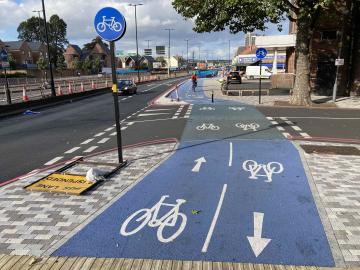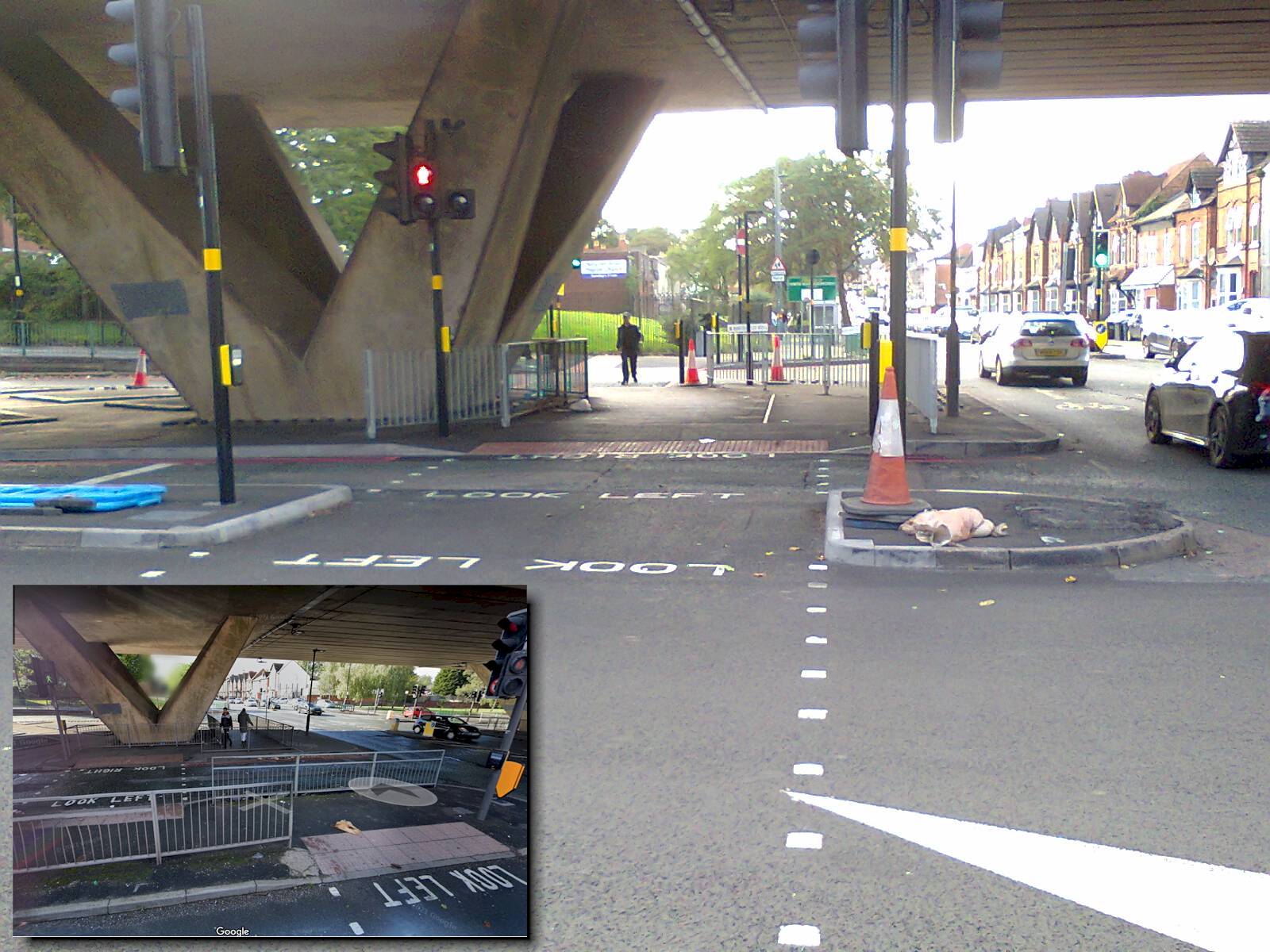
In October 2022 a few members of Push Bikes cycled from Selly Oak to Perry Barr to look at new cycling infrastructure (a so-called cycling safari). In particular, we looked at Selly Oak, the link from Cannon Hill Park to the A38 blue route, and the extension of the A34 blue route to Perry Barr.
The original A34 cycle track, completed in 2019, ran from the city centre, alongside the A34 to the junction with Heathfield Street, which was some distance short of the Perry Barr local centre. It was disappointing that the original route didn't connect the local centre to the city centre, but BCC decided that it would be more practical to complete the cycle track alongside the 2022 Commonwealth Games work, when there would be a significant remodelling of the roads around Perry Barr, including removing one of the fly-overs. Those plans went out for consultation in 2019, and when we responded at the time, we were disappointed that some of the ambition of the original plans seemed to have been lost in the extension scheme.
The photos below show key sections of the route, and I have provided comments on those photos to discuss those sections. The next section is going to provide some evaluation of the route with reference to LTN 1/20 - you might want to skip this section and proceed to the photos and then come back to read this section afterwards.
LTN 1/20 and the Perry Barr extension
Overall, I think that the route is good, but here are a couple of issues that I want to discuss where LTN 1/20 guidelines and the route that has been built have some possible conflicts.
One concern I have is that this is a single linear route, but it crosses several major junctions that connect to other parts of Birmingham. LTN 1/20 says that "New junctions should be designed to provide good conditions for cycling in all permitted directions, regardless of whether they are on a designated route" (section 10.3.2), but the changes to the key junction of the A4040 (outer ringroad) and A34 only provide facilities for people to cycle along the single linear route. Although the facilities for cycling in that one direction are pretty good, the junction design fails to provide for future network links. This is a common issue that I see in many of the designs for junctions along the new cycle routes - how the route connects with the surrounding area seems to have less attention paid to it than it should.
Another point for discussion is the use of shared use pavements at several points on this route. LTN 1/20 says that "In urban areas, the conversion of a footway to shared use should be regarded as a last resort." (section 6.5.4), going on to say that it creates issues for people with visual impairments and is generally not favoured by people walking or cycling. Section 6.5.6 lists some situations where it might be appropriate - the relevant exemptions for this route are where it is necessary to get continuity for the route and at junctions where people on cycles are moving more slowly and / or there are toucan crossing facilities (notably, the example LTN 1/20 chooses for this is a situation where peak cycle traffic and peak walking traffic occur at different times). Through Perry Barr local centre, where there is a lot of walking, the cycle track is continuous, in keeping with LTN 1/20 requirements. Outside of the local centre, shared use pavements have been used where there were space constraints and purchasing adjoining sections of land would have been expensive. But opposite the One Stop shopping centre, some shared use pavement cycling has been implemented to fudge the crossing of the bus lane, and that seems a poor decision to me. I also don't think that breaking the cycle track up for shared use pavements at the A4040 / A34 junction is the right choice either, as it will have an impact on the directness for people cycling across that junction.
Toucan crossing at the Heathfield Road junction

Shared use pavement approaching underpass.jpg

Cycle track at Canterbury Road junction.jpg

Cycle track crossing Bragg Road.jpg

Cycle crossing at the A4040 A34 crossroads.jpg

Shared use pavement on the A4040 A34 junction.jpg

Cycle track outside the One Stop shopping centre.jpg

Conflicting signs at the end of the A34 cycle route.jpg



